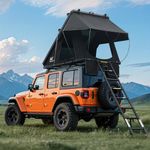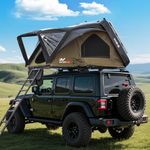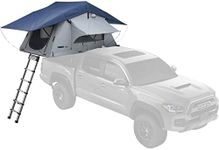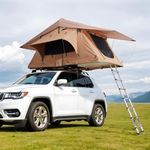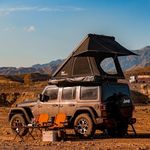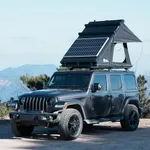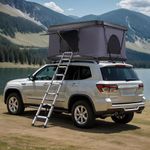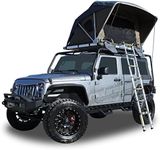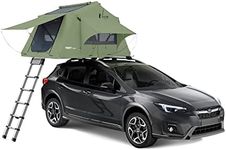Buying Guide for the Best Rooftop Tents
Choosing a rooftop tent is an exciting step for anyone looking to enhance their camping or overlanding experience. Rooftop tents offer the convenience of quick setup, comfort, and the ability to camp almost anywhere your vehicle can go. When picking the right rooftop tent, it's important to consider your vehicle's compatibility, your camping style, and the number of people who will use the tent. Understanding the key specifications will help you find a tent that matches your needs and ensures a safe, comfortable adventure.Weight and Load CapacityWeight refers to how heavy the tent is, while load capacity is the maximum weight the tent can safely support, including people and gear. This is important because your vehicle’s roof and roof rack have weight limits, both when stationary and while driving. Tents can range from lightweight models suitable for smaller cars to heavier, more robust options for larger vehicles. To pick the right one, check your vehicle and roof rack’s dynamic (driving) and static (parked) weight limits, and make sure the tent plus occupants and gear do not exceed these numbers.
Sleeping CapacitySleeping capacity tells you how many people can comfortably sleep in the tent. Rooftop tents typically range from two-person to four-person sizes. Smaller tents are lighter and easier to set up, while larger tents offer more space but add weight and bulk. Choose a tent that matches the number of regular campers; if you camp solo or as a couple, a two-person tent is usually enough, but families or groups should look for larger options.
Tent Material and Weather ResistanceThe material of the tent, including the fabric and the frame, affects its durability and how well it handles different weather conditions. Look for tents made from high-quality, waterproof, and UV-resistant fabrics, as well as sturdy frames. Some tents are better for mild weather, while others are designed for heavy rain, wind, or even snow. Think about where and when you’ll camp most often—if you expect harsh weather, prioritize strong, weatherproof materials.
Setup Mechanism (Soft Shell vs. Hard Shell)Rooftop tents come in two main types: soft shell and hard shell. Soft shell tents fold open like a traditional tent and often have more space, while hard shell tents have a rigid top and usually open with gas struts or hinges, making them quicker and easier to set up. Hard shell tents are more aerodynamic and weather-resistant, but tend to be heavier and more expensive. If you value quick setup and durability, a hard shell may be best; if you want more space and don’t mind a longer setup, consider a soft shell.
Entry and Ladder DesignThe way you get in and out of the tent, and the type of ladder provided, can affect comfort and safety. Some tents have straight ladders, while others have telescoping or angled ladders. Entry points can be on the side or end of the tent. Consider who will be using the tent—children or people with mobility issues may need a more stable, easy-to-climb ladder and a convenient entry point.
Ventilation and WindowsGood ventilation is important for comfort and to prevent condensation inside the tent. Look for tents with multiple windows, mesh panels, and vents. More windows and vents mean better airflow, which is especially important in hot or humid climates. If you plan to camp in a variety of conditions, choose a tent with adjustable ventilation options.
Packed Size and StoragePacked size refers to how much space the tent takes up when closed and stored on your roof. Some tents are compact and low-profile, which helps with fuel efficiency and garage clearance, while others are bulkier. Consider your vehicle’s size, how often you’ll remove the tent, and where you’ll store it when not in use. If you have limited storage space or a smaller vehicle, a more compact tent may be a better fit.


